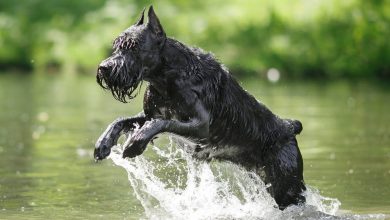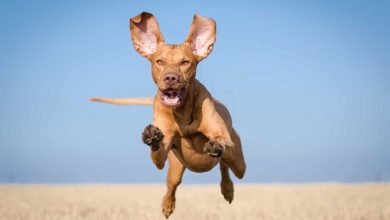Uncovering the Mystery: Why Does Your Dog Dread Harness Time?

1. Introduction
Putting a harness on your dog can be a difficult and frustrating experience. If your dog hates putting his harness on, it can be an even more stressful situation. It is important to understand why your dog may be uncomfortable or afraid of putting the harness on so that you can make the process easier for both you and your pup. In this article, we will explore some of the reasons why your dog may hate putting his harness on, as well as some tips to help make the process easier for both you and your pup.
2. Reasons why your dog may hate putting on a harness
There are many reasons why your dog may not like wearing a harness. Some of the most common reasons include:
• Pain or discomfort: If the harness does not fit properly, it can cause pain or discomfort when it is being put on or taken off. This could cause your pup to become fearful and resistant when it comes time to put the harness back on again.
• Fear of restraint: Some dogs may have an inherent fear of being restrained, which could lead them to resist putting their harnesses on. This could be due to past experiences or simply because they don’t like feeling restricted in any way.
• Lack of familiarity: If your pup has never worn a harness before, they may feel anxious and uncertain when you try to put one on them for the first time. This lack of familiarity can lead to resistance when it comes time to put their new accessory on.
• Overstimulation: Some dogs may find having something new and unfamiliar placed around their body too overwhelming, causing them to become agitated or anxious during the process of putting their harnesses on.
3. The importance of proper fit and comfort
It is important that you get a properly fitting harness for your pup in order for them to feel comfortable while wearing it. A properly fitting harness should not be too tight or too loose; it should fit snugly but still allow some freedom of movement for your pup’s body parts such as their neck and chest area. Additionally, look for a breathable fabric that won’t irritate their skin if they are prone to allergic reactions or sensitivities towards certain materials such as nylon or plastic buckles/straps etc..
4. How to make the process more pleasant for your dog
To make the process more pleasant for both you and your pup, try introducing them slowly but positively into wearing their new accessory by rewarding them with treats whenever they successfully put it on without any resistance or fussing from them! Additionally, try praising them with words such as ‘good job’ every time they cooperate with you in order to reinforce positive behaviour from them during this process! You could also try distracting them with toys while you’re trying to put their new accessory onto them in order for this activity not seem so daunting!
5. Training tips to help your dog get used to wearing a harness
In addition to making sure that you have chosen an appropriate size/fit for their new accessory, there are also several training tips that you can use in order help get used to wearing his/her new accessory:
• Start slow – Introduce him/her slowly into wearing the new accessory by rewarding him/her with treats whenever he/she successfully puts it without any fussing from him/her!
• Keep sessions short – Try keeping each session short (e.g., 5-10 minutes) so he/she does not get overwhelmed by trying out something new all at once!
• Make sure he/she is comfortable – Make sure that he/she feels comfortable throughout each session by taking breaks if necessary (e.g., offering treats during breaks).
• Be consistent – Make sure that you are consistent in training him/her so he/she becomes familiar with what is expected from him/her each time!
6 What type of harness is best for your dog?
When choosing a type of harness best suited for your pup, consider factors such as breed type (e.g., larger breeds need stronger support), activity level (e.g., active pups need more durable options), coat type (e.g., long haired breeds need breathable options),budget (e.g., adjustable options tend to be more expensive), etc.. Additionally, look out for features such as adjustable straps which allow more customization when fitting around different body shapes; padded straps which provide extra comfort; reflective strips which increase visibility during nighttime walks; quick-release buckles which make taking off easier; etc.. All these features will help ensure that both you and pooch have an enjoyable experience every time he wears his new accessory!
7 Summary
Putting a harness onto our furry friends can be quite challenging especially if they don’t like doing so! To make this experience less stressful for both parties involved we must first understand why our pups might dislike having something foreign placed around their bodies – whether due pain caused by ill-fitting accessories; fear caused by previous experiences; lack of familiarity; overstimulation – then take steps towards making this activity more pleasant such as introducing our pups slowly into wearing accessories through positive reinforcement methods & providing proper fitting options tailored specifically towards our pups needs & preferences!
8 Conclusion
. With patience & understanding we can make putting our pups’ accessories on much less stressful & much more enjoyable experience overall – one where both parties involved would look forward too instead dreading it every single time!



